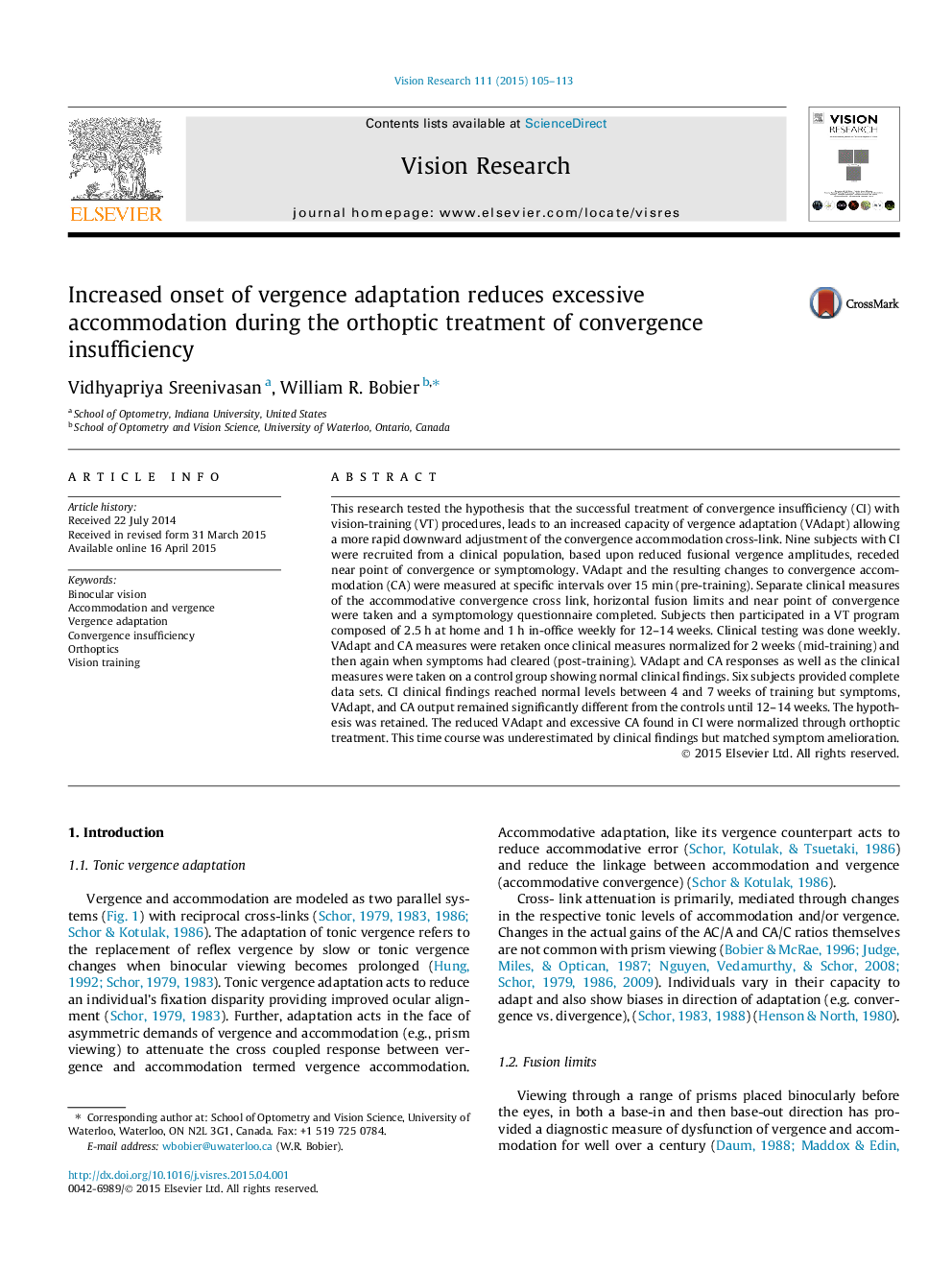| Article ID | Journal | Published Year | Pages | File Type |
|---|---|---|---|---|
| 4033571 | Vision Research | 2015 | 9 Pages |
•Vision training of convergence insufficiency was found to be effective.•Training improved vergence adaption which corrected excessive accommodation.•Symptom amelioration correlated more with vergence adaptation than clinic findings.•The results were consistent with current models of accommodation and vergence.
This research tested the hypothesis that the successful treatment of convergence insufficiency (CI) with vision-training (VT) procedures, leads to an increased capacity of vergence adaptation (VAdapt) allowing a more rapid downward adjustment of the convergence accommodation cross-link. Nine subjects with CI were recruited from a clinical population, based upon reduced fusional vergence amplitudes, receded near point of convergence or symptomology. VAdapt and the resulting changes to convergence accommodation (CA) were measured at specific intervals over 15 min (pre-training). Separate clinical measures of the accommodative convergence cross link, horizontal fusion limits and near point of convergence were taken and a symptomology questionnaire completed. Subjects then participated in a VT program composed of 2.5 h at home and 1 h in-office weekly for 12–14 weeks. Clinical testing was done weekly. VAdapt and CA measures were retaken once clinical measures normalized for 2 weeks (mid-training) and then again when symptoms had cleared (post-training). VAdapt and CA responses as well as the clinical measures were taken on a control group showing normal clinical findings. Six subjects provided complete data sets. CI clinical findings reached normal levels between 4 and 7 weeks of training but symptoms, VAdapt, and CA output remained significantly different from the controls until 12–14 weeks. The hypothesis was retained. The reduced VAdapt and excessive CA found in CI were normalized through orthoptic treatment. This time course was underestimated by clinical findings but matched symptom amelioration.
